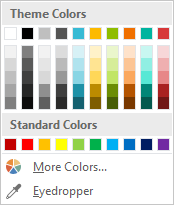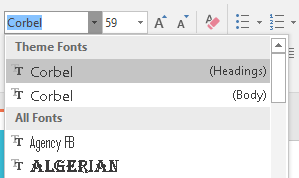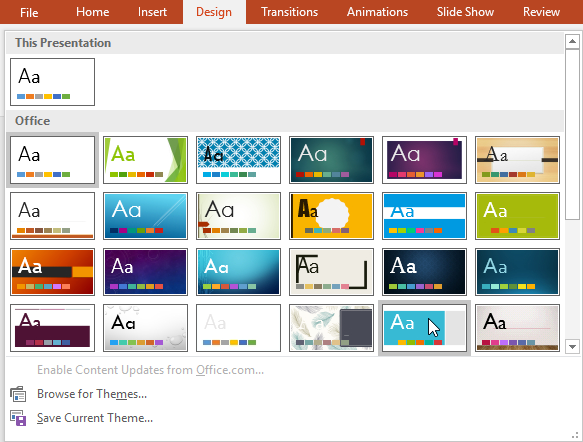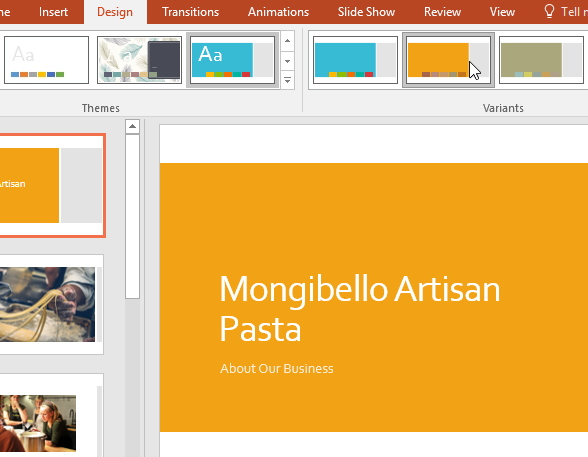PowerPoint -
Applying Themes

PowerPoint
Applying Themes


/en/powerpoint/text-basics/content/
A theme is a predefined combination of colors, fonts, and effects. Different themes also use different slide layouts. You've already been using a theme, even if you didn't know it: the default Office theme. You can choose from a variety of new themes at any time, giving your entire presentation a consistent, professional look.
Optional: Download our practice presentation.
Watch the video below to learn more about applying themes in PowerPoint.
In PowerPoint, themes give you a quick and easy way to change the design of your presentation. They control your primary color palette, basic fonts, slide layout, and other important elements. All of the elements of a theme will work well together, which means you won't have to spend as much time formatting your presentation.
Each theme uses its own set of slide layouts. These layouts control the way your content is arranged, so the effect can be dramatic. In the examples below, you can see that the placeholders, fonts, and colors are different.

If you use a unique slide layout—such as Quote with Caption or Name Card—then switch to a theme that does not include this layout, it may give unexpected results.
Every PowerPoint theme—including the default Office theme—has its own theme elements. These elements include:



When you switch to a different theme, all of these elements will update to reflect the new theme. You can drastically change the look of your presentation in a few clicks.
If you apply a font or color that isn't part of the theme, it won't change when you select a different theme. This includes colors selected from the Standard Colors or More Colors options and fonts selected from All Fonts. Using non-theme elements can be useful when you want certain text to be a specific color or font, like a logo.
You can also customize themes and define theme elements yourself. To learn more, review our lesson on Modifying Themes.
All themes included in PowerPoint are located in the Themes group on the Design tab. Themes can be applied or changed at any time.



Once you've applied a theme, you can select a variant for the theme from the Variants group. Variants use different theme colors while preserving a theme's overall look.


/en/powerpoint/applying-transitions/content/